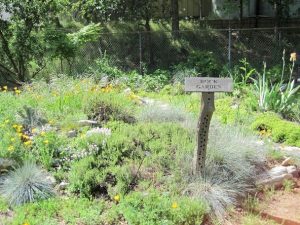All of us—people, animals, and plants—are exhausted from the heat. October is starting out hot, too.
Outdoor plants have no opportunity to find air conditioning and cool down. Nighttime temperatures did not drop enough to cool the soil. Plants are drooping, losing leaves, and outright collapsing. By now, doing an inventory of your plants and their status should advise you of potential problems and expirations.
Problems stem from stress, whether it is heat, wind, or inconsistent watering. Scorched leaves are consistent with too much sun and heat. Brown, dry leaves and stems are created by too little water. Collapsing, curling leaves and stems that are turning yellow are often signals of too much water. Dropping leaves, leaves changing color, or stems unable to remain in a normal position are examples of a plant trying to protect itself by shutting down.
Ask yourself, “Is this plant salvageable, on the way out, or already dead?” The first step in your evaluation is the scratch test applied to trunk, branch, or stem. By using either your thumb nail or a sharp object, scratch the top exterior layer of the plant, looking for green, healthy tissue under the dry, dead appearance. This is not a marring, deep cut, but just a scratch through the top layer. Continue up the trunk or branches looking for dead stems. Break or cut off dead stems or branches, checking the interior for signs of life. If you are discovering dead wood that needs to be removed, timing becomes important. Signaling the plant to add growth now by removing the dead wood will cause cold weather damage to new growth later on. Wait until closer to spring for hard pruning unless the plant is dormant.
If roots are still alive and heathy, your plant has an opportunity to grow back. Roots should be like stems—firm, pliable, and have colors that prove the plant is still alive. If stems and branches are dead but the roots are in good shape, start cutting back the stems one third at a time. Look at each cut for signs for life, especially close to the root system. Try to leave as much stem as possible; new leaves and stems will emerge from existing plant branches. If everything above ground is dead, leave a couple inches of stem above ground and place the plant in an area with only half the required sunlight. Water only when the soil is dry.
By giving the plant an opportunity to recover after the removal of dead plant material, you should see new sprouts or growth (usually around the thirty-day mark). If it’s your plant’s normal dormant season, new growth may appear in the following season.
If your plant is in a pot, repotting with fresh potting soil might provide a rejuvenating kick start. Check light levels and move it to half shade or morning sunlight while it recuperates. Make sure the pot drains so the plant is not overcome with water.
Returning a plant to health may be a long-term endeavor. Your plant may look sad for quite some time and may still die. Is this plant worth saving or does your local nursery have a replacement? A plant that is hard to find or belonged to your grandmother is worth the effort to resuscitate.
Overwhelming heat has a long-term effect on all of us. We humans learned that being cooked into pliable jerky is best left to those people living in Arizona. We also learned that our plants here do not care for Death Valley temperatures. We all learned that shade is king, and we need more of it. With your help, Mother Nature will not have to populate the entire West with cacti and thorns.
Julie Silva is a UCCE Master Gardener in Tuolumne County.

